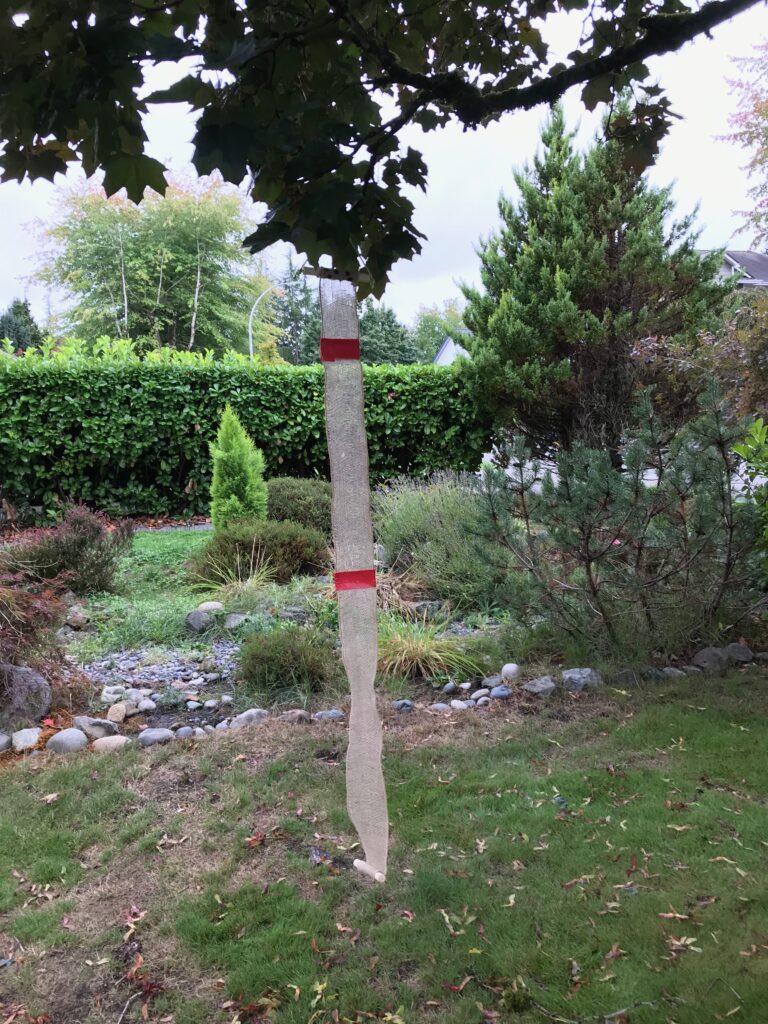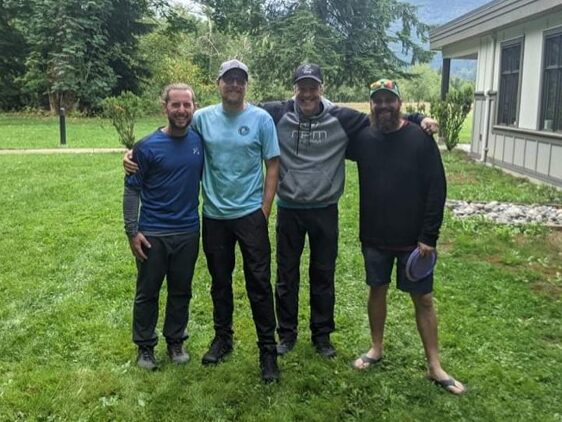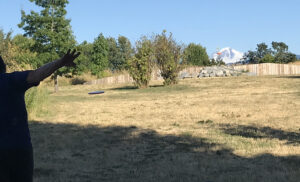I recently posted on Facebook about a great weekend of competitive golf one a pop-up course at Fraserglen Golf Course for the 2022 Fraserglen Charity Open. The experience got me asking myself, why was that weekend so much fun. The bulk of the post follows, and, I think, will help me think more about course design issues.
Saturday was a singles event that I previously posted on, Sunday was a doubles event in the rain. Dennis Dreger (of Mundy Park fame) and I got to team up and take on two other teams in the Advanced Amateur division (Dennis was looking at maintaining his amateur status so we picked this division to compete in). We played well in the first round, 13 under par on the 20 hole course, leaving us one behind the leaders. Both teams slowed down in round two, where we finished nine down while our competition, Dayna Fitzgerald and Kieran Atkinson, finished eight under, leaving us in a tie for first. As it was a charity event, cold, rainy, and dark (by the time we finished), and we wanted to celebrate the great competition we had, we decided to leave it as a first place tie.
But, that’s not the story I want to tell. The real story was that I just had a blast, and I’ve been trying to figure out why. Don’t get me wrong, I always enjoy disc golf, but on this course, at this time, I felt great freedom to just throw, create lines and strategy, and enjoy the flight of the disc. Even my mistakes left me intrigued by the opportunities for recovery. I’ll be breaking this down and reflecting on it for a while from a course design perspective, but here’s a quick take on what I think went right for me.
First, there was a fair amount of strategic OB on the course (greens and hazards). That said, these areas were placed to avoid, rather than to constrain. As a player, I had a huge amount of choice in how to attack the pin, with the freedom to lay up or run the pin in a variety of ways. That made it fun.
Second, there was very little “convenience OB”. What do I mean by the term? I’m using this to identify OB put in place to facilitate speed of play (for example, to avoid having players delay the game by looking for lost discs, or to avoid complex recovery shots that take time to set up and execute). A lot of courses are using this these days (I’m looking at you Raptors ![]() ) but what that often does is kill opportunities for scramble. There were a number of times Dennis and I (and Kieran and Dayna) had to get really creative and make hard strategic decisions in our match based on drives that ended up off the fairway, under trees or behind bushes. That gave us opportunities to execute a great save or acknowledge that a layup was a better strategy and take an extra throw to get to the pin. Convenience OB takes that choice and opportunity away from the player, removes them from the rough and drops them back on the fairway with the one stroke penalty.
) but what that often does is kill opportunities for scramble. There were a number of times Dennis and I (and Kieran and Dayna) had to get really creative and make hard strategic decisions in our match based on drives that ended up off the fairway, under trees or behind bushes. That gave us opportunities to execute a great save or acknowledge that a layup was a better strategy and take an extra throw to get to the pin. Convenience OB takes that choice and opportunity away from the player, removes them from the rough and drops them back on the fairway with the one stroke penalty.
Third, as suggested earlier, there was no constraining OB–that is, OB leaving players with only one safe place to land, in a bit of a do or die approach to course design. Every hole seemed to have safe and aggressive lines to the pin so there was always a risk/reward opportunity, and that makes golf fun.
Finally, though “par” is largely an artificial concept, there were a fair number of what I would call soft-pars. That is, calling a 450 foot +/- hole a par four, largely due to the hazards that needed to be avoided. I need to think more about this, but what that did was give us a good opportunity to score and a lot of forgiveness if we didn’t. The end result was that I never felt beat up or oppressed by the course.
Ultimately, kudos to event hosts and course designers, Rob Workman and Jonathan Snys for an entertaining event on a great course and for a great cause (Archway food bank), and time for me to add an addendum to my Principles of Good Course Design post: Principles for Quality Play. Look for it soon in a bookstore near you 🙂. OK, on this website, coming soon.





















